Promazine hydrochloride
Synonym(s):10-(3-Dimethylaminopropyl)phenothiazine hydrochloride;Promazine hydrochloride
- CAS NO.:53-60-1
- Empirical Formula: C17H21ClN2S
- Molecular Weight: 320.88
- MDL number: MFCD00058535
- EINECS: 200-179-7
- SAFETY DATA SHEET (SDS)
- Update Date: 2025-12-16 16:15:04
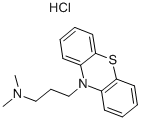
What is Promazine hydrochloride?
Chemical properties
White Solid
The Uses of Promazine hydrochloride
Promazine hydrochloride has been used in conductivity and surface tension measurements and for testing inhibition of feline coronavirus (FCoV) in Felis catus whole fetus-4 (fcwf-4) cells.
The Uses of Promazine hydrochloride
Antipsychotic. Tranquilizer.
What are the applications of Application
Promazine Hydrochloride is a D2DR inhibitor
Definition
Isomeric with promethazine hydrochloride.
brand name
Sparine (Baxter Healthcare); Sparine (Wyeth).
General Description
Promazine hydrochloride (PMZ) belongs to the phenothiazine drug family. Promazine is a D2 dopamine receptor antagonist and has antipsychotic and anticholinergic functionality. It is used for pain management and is also used for treating hypersensitivity reactions.
Biochem/physiol Actions
D2 dopamine receptor antagonist; phenothiazine antipsychotic.
Clinical Use
Antipsychotic for agitation and restlessness
Safety Profile
Poison by ingestion, subcutaneous, intravenous, intraperitoneal, and intramuscular routes. Human systemic effects by ingestion: general anesthesia, tremors, antipsychotic effects. An addltive permitted in food for human consumption; also permitted in the feed and drinhng water of animals and/or for the treatment of food-producing animals. When heated to decomposition it emits toxic fumes of NOx, SOx, and HCl
Drug interactions
Potentially hazardous interactions with other drugs
Anaesthetics: enhanced hypotensive effect.
Analgesics: increased risk of convulsions with
tramadol; enhanced hypotensive and sedative
effects with opioids; increased risk of ventricular
arrhythmias with methadone.
Anti-arrhythmics increased risk of ventricular
arrhythmias with anti-arrhythmics that prolong
the QT interval, e.g. procainamide, disopyramide,
dronedarone and amiodarone - avoid with
amiodarone and dronedarone.
Antibacterials: increased risk of ventricular
arrhythmias with delamanid and moxifloxacin -
avoid.
Antidepressants: increase concentrations and
additive antimuscarinic effects, notably with
tricyclics; increased risk of ventricular arrhythmias
with citalopram and escitalopram - avoid; increased
risk of convulsions with vortioxetine.
Antiepileptics: antagonised (convulsive threshold
lowered).
Antimalarials: avoid with artemether/lumefantrine
and piperaquine with artenimol.
Antipsychotics: increased risk of ventricular
arrhythmias with droperidol and pimozide - avoid;
increased risk of ventricular arrhythmias with
risperidone.
Antivirals: concentration possibly increased with
ritonavir; increased risk of ventricular arrhythmias
with saquinavir - avoid.
Anxiolytics and hypnotics: increased sedative effects.
Atomoxetine: increased risk of ventricular
arrhythmias.
Beta-blockers: enhanced hypotensive effect;
increased risk of ventricular arrhythmias with sotalol.
Cytotoxics: increased risk of ventricular arrhythmias
with arsenic trioxide.
Desferrioxamine: avoid concomitant use.
Diuretics: enhanced hypotensive effect.
Lithium: increased risk of extrapyramidal side effects
and possibly neurotoxicity.
Pentamidine: increased risk of ventricular
arrhythmias.
Anti-arrhythmics: increased risk of ventricular
arrhythmias with anti-arrhythmics that prolong the
QT interval - avoid with amiodarone, disopyramide
and dronedarone.
Antibacterials: increased risk of ventricular
arrhythmias with delamanid and moxifloxacin -
avoid.
Antidepressants: increased level of tricyclics
(possibly increased risk of ventricular arrhythmias
and antimuscarinic side effects); increased risk
of ventricular arrhythmias with citalopram and
escitalopram - avoid; increased risk of convulsions
with vortioxetine.
Anticonvulsant: antagonises anticonvulsant effect.
Antimalarials: avoid with artemether/lumefantrine
and piperaquine with artenimol.
Antipsychotics: increased risk of ventricular
arrhythmias with droperidol and pimozide - avoid;
increased risk of ventricular arrhythmias with
risperidone.
Antivirals: concentration possibly increased with
ritonavir; increased risk of ventricular arrhythmias
with saquinavir - avoid.
Anxiolytics and hypnotics: increased sedative effects.
Atomoxetine: increased risk of ventricular
arrhythmias.
Beta-blockers: enhanced hypotensive effect;
increased risk of ventricular arrhythmias with sotalol.
Cytotoxics: increased risk of ventricular arrhythmias
with arsenic trioxide.
Diuretics: enhanced hypotensive effect.
Lithium: increased risk of extrapyramidal side effects
and possibly neurotoxicity.
Pentamidine: increased risk of ventricular
arrhythmias.
Metabolism
Promazine undergoes considerable first-pass metabolism in the gut wall. It is also extensively metabolised in the liver and is excreted in the urine and faeces in the form of numerous active and inactive metabolites.
Properties of Promazine hydrochloride
| Melting point: | 174-176?C |
| Density | 1.1435 (rough estimate) |
| refractive index | 1.6000 (estimate) |
| storage temp. | 2-8°C |
| solubility | Chloroform (Slightly), Methanol (Slightly), Water (Slightly) |
| form | neat |
| form | Solid |
| color | White |
| BRN | 3753230 |
| CAS DataBase Reference | 53-60-1(CAS DataBase Reference) |
| NIST Chemistry Reference | N,N-dimethyl-10H-phenothiazine-1-propanamine hydrochloride(53-60-1) |
| EPA Substance Registry System | Promazine hydrochloride (53-60-1) |
Safety information for Promazine hydrochloride
| Signal word | Warning |
| Pictogram(s) |
 Exclamation Mark Irritant GHS07 |
| GHS Hazard Statements |
H302:Acute toxicity,oral H317:Sensitisation, Skin |
| Precautionary Statement Codes |
P280:Wear protective gloves/protective clothing/eye protection/face protection. |
Computed Descriptors for Promazine hydrochloride
New Products
4,4-Difluoropiperidine hydrochloride tert-butyl 9-methoxy-3-azaspiro[5.5]undecane-3-carboxylate Indole Methyl Resin N-Isopropylurea N,N-Dicyclohexylcarbodiimide(DCC) MELDRUMS ACID 5-METHYLISOXAZOLE-4-CARBOXYLIC ACID Magnessium Bis glycinate Zinc ascorbate 1-bromo-2-butyne 2-acetamidophenol 9(10H)-anthracenone Erythrosin B, 4-Piperidinopiperidine 2-((4-morpholinophenylamino) (methylthio) methylene) malononitrile 2,4-dihydroxybenzaldehyde 3-(4-morpholinophenylamino)-5-amino-1H-pyrazole-4-carbonitrile Methyl 2-methylquinoline-6-carboxylate 2,6-dichloro-4-nitropyridine 4-Bromo-2-chlorobenzonitrile 2-(benzylamino)acetic acid hydrochloride 4-(tert-Butoxycarbonylamino)but- 2-ynoic acid 3,4-dihydro-2H-benzo[b][1,4]dioxepine 1-Phenyl-1-cycloprppanecarboxylicacidRelated products of tetrahydrofuran
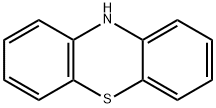



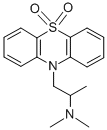
![(-)-2-[METHYLAMINO]-1-PHENYLPROPANE](https://img.chemicalbook.in/CAS/GIF/33817-09-3.gif)
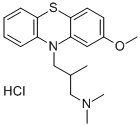

You may like
-
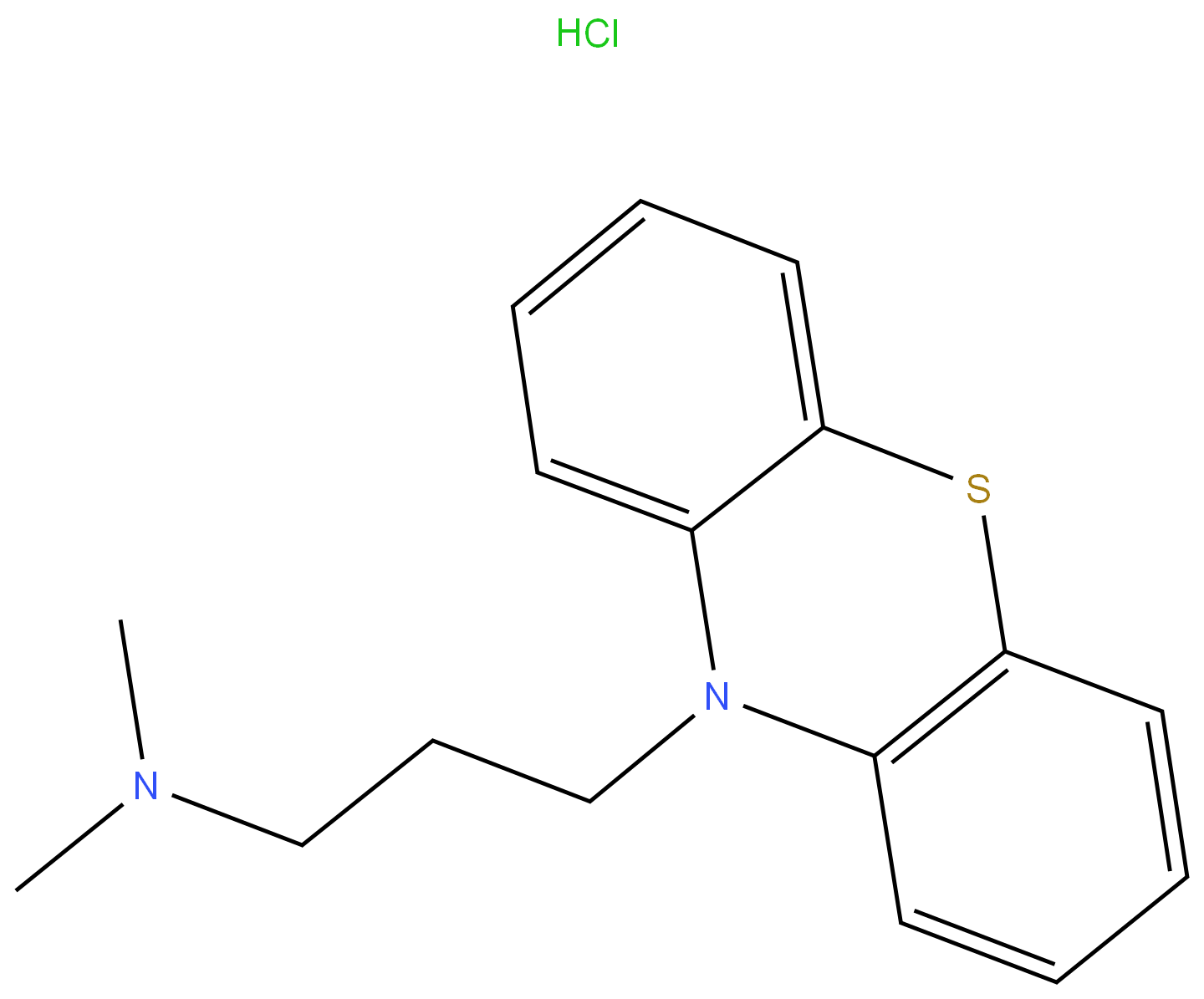 53-60-1 Chlorpromazine EP Impurity C 98%View Details
53-60-1 Chlorpromazine EP Impurity C 98%View Details
53-60-1 -
 Promazine hydrochloride 98.00% CAS 53-60-1View Details
Promazine hydrochloride 98.00% CAS 53-60-1View Details
53-60-1 -
 Promazine hydrochloride CAS 53-60-1View Details
Promazine hydrochloride CAS 53-60-1View Details
53-60-1 -
 Promazine hydrochloride CAS 53-60-1View Details
Promazine hydrochloride CAS 53-60-1View Details
53-60-1 -
 Promazine hydrochloride CAS 53-60-1View Details
Promazine hydrochloride CAS 53-60-1View Details
53-60-1 -
 Promazine Hydrochloride CAS 53-60-1View Details
Promazine Hydrochloride CAS 53-60-1View Details
53-60-1 -
 Promazine hydrochloride CAS 53-60-1View Details
Promazine hydrochloride CAS 53-60-1View Details
53-60-1 -
 20677-73-0 (2,2-diethoxyethyl)methylamine 98%View Details
20677-73-0 (2,2-diethoxyethyl)methylamine 98%View Details
20677-73-0
